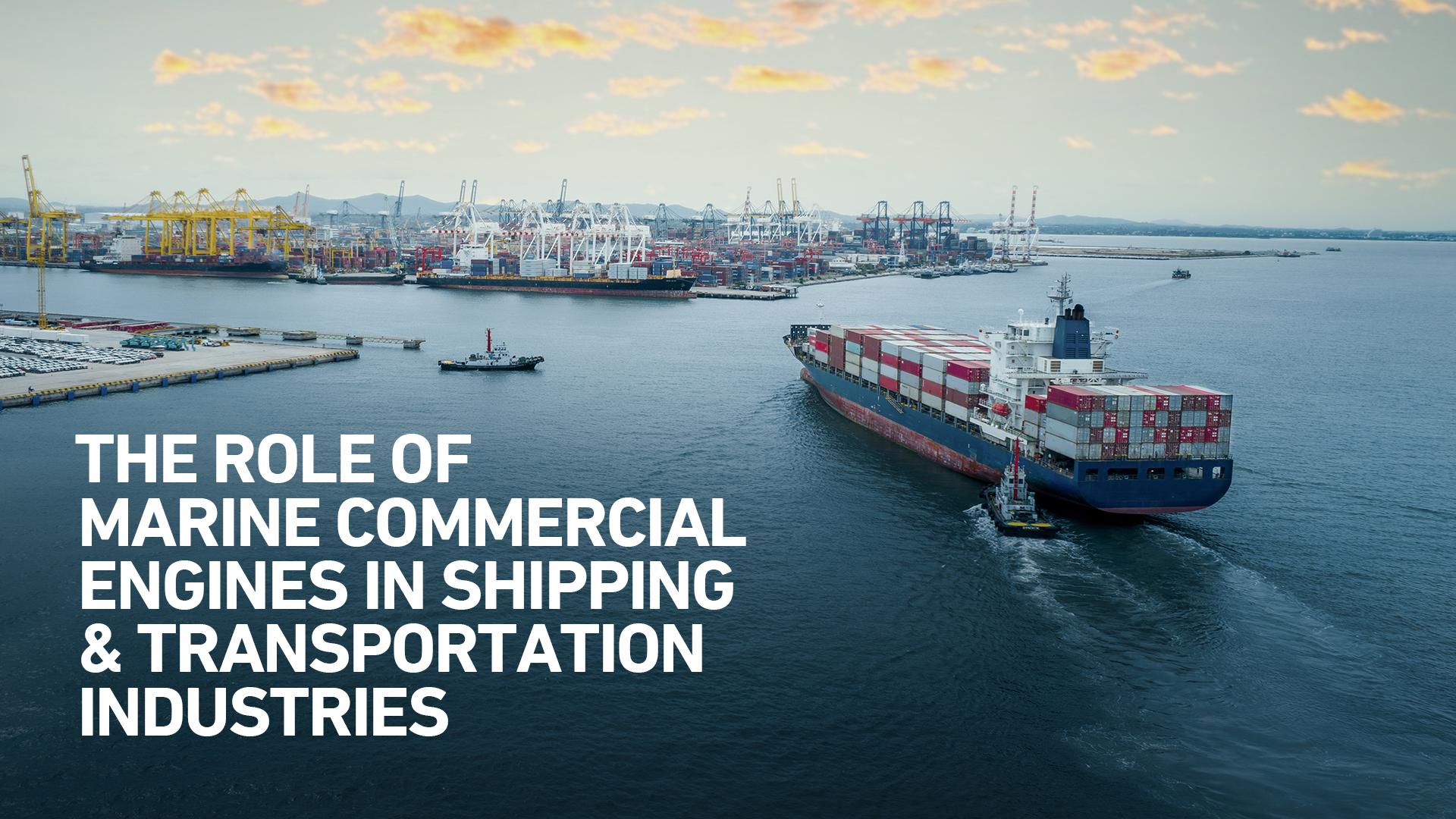Significance of Marine Engines in Shipping Industries

Today’s shipping industry is in charge of transporting and delivering over 95% of global trade volume. It's difficult to emphasize how much the world relies on the efficiency and stability of the shipping industry. It serves as the backbone of global trade as it transports commodities and goods from country to country. Along with this, the shipping industry is critical in the global economy as it drives commerce and trade while creating opportunities and jobs.
Marine diesel engines serve as the heart of ships, powering a vast fleet of vessels that traverse the world’s oceans. These engines range from small units used in leisure boats to massive engines found in cargo ships and cruise liners. They play a very vital role in empowering the maritime world and supporting global trade, transportation, and leisure activities.
History of Marine Diesel Engines
The history of marine diesel engines began in 1903 when the first diesel-electric river tanker, the Vandal, was put into service by Branobel. The first fully diesel-powered ship of note, the MS Selandia, was launched in 1912.
Let’s have a look at some other milestones in the history of marine diesel engines:
1905: Sulzer developed the first reversing two-stroke marine engine.
1930: Airless fuel injection became standard for all engine types, which improved efficiency and reduced maintenance.
1946: Sulzer’s 6TAD48 engine became the first turbocharged two-stroke diesel engine to be used in normal operation.
1950: The development of larger, more powerful diesel engines for the marine industry to meet the demands of growing container shipping.
1960: The introduction of electronically controlled fuel injection systems was employed.
1990: The introduction of exhaust gas recirculation (EGR) systems to reduce NOx emissions.
2000: Stricter emission regulations led to the development of Selective Catalytic Reduction (SCR) systems.
2010: The rise of dual-fuel engines capable of operating on both marine gas oil and liquified natural gas (LNG).
Types of Marine Engines
When it comes to powering boats, there are a few main types of marine engines: outboard, inboard, stern, and jet drive engines, plus pod drives. Let’s have a look at each one of them in detail.
- Outboard Marine Engines
An outboard engine is mounted on the transom of a boat and is used to both power and steer the boat. To steer a boat with an outboard engine, you move the entire engine. Outboard engines are most commonly used for fishing, water sports, and pleasure boating.
- Inboard Marine Engines
An inboard engine is located inside the boat’s hull. These engines power a drive shaft that’s connected to a propeller. An inboard marine engine does not steer the boat, instead, it has a rudder(s) behind the propeller and is controlled by a steering wheel. Inboard boat engines are often used for water sports because they create more predictable waves and excellent torque.
- Sterndrive Marine Engines
A sterndrive engine also called an inboard-outboard engine, utilizes an inboard engine that is mounted on the inside of the hull for power, which is attached to a drive unit that resembles the lower portion of an outboard engine. And just like outboard engines, this drive unit is used to steer the boat. Sterndrives are perfect for those wanting more horsepower and torque, as well as agility.
- Pod Drives
Pod drives utilize an inboard engine, with a gearbox and drive unit connected directly to the engine, and mounted right beneath the boat in the water. Much like a sterndrive, the exhaust and water inlet are incorporated with the drive, and they are mounted in a manner that allows them to increase fuel efficiency, and reduce drag.
- Jet-drive Marine Engines
A jet drive engine uses water to propel the boat and steer it. Water enters through a small inlet at the bottom and is then thrust outwards, creating acceleration. Jet-drive marine engines are great for high-performance scenarios and work best in shallow water. Another great feature of jet drive propulsion is that there are no exposed propeller blades.
Technological Advancements in Engine Technology for Ships
The marine industry is constantly evolving and new technologies are coming in to improve the performance of engines used to propel ships. Top marine diesel engine manufacturers across the globe are doing extensive R&D to enable advancements in engines. Let’s have a look at some of the developments that are currently taking place.
- Developments in Fuel Efficiency
Fuel efficiency is the bedrock of marine ship engine technology. One of the most significant developments in fuel efficiency is using integrated power systems, which combine different propulsion technologies, including energy storage systems, electric propulsion, and diesel engines.
Advanced designs for ship engine technology, such as waste heat recovery systems and enhanced combustion processes, have allowed substantial improvements in fuel efficiency. For example, Exhaust Gas Recirculation (EGR) and Selective Catalytic Reduction (SCR) help enhance fuel efficiency.
- Developments in Emission Reduction
One of the most notable advancements in maritime innovations is the rise of exhaust gas cleaning systems, more popularly called scrubbers. These scrubbers eliminate particular matter and sulfur oxides from the exhaust gases. Scrubbers can help ships adhere to strict regulations.
The integration of next-generation ship engine technology, such as advanced after-treatment systems and cleaner-burning fuels, has significantly reduced particulate emissions and nitrogen oxides. For instance, the High-Pressure Selective Catalytic Reduction (HP-SCR) systems can effectively reduce nitrogen oxide emissions by injecting urea into exhaust systems that convert them into harmless water vapour and nitrogen.
- LNG-Fueled Ships
- Several models use liquefied natural gas or LNG as ship fuel. LNG’s heating value makes it come across as an excellent alternative fuel. In addition to this, LNG is considered one of the cleanest burning fuels available.
Final Thoughts
In conclusion, the role of marine diesel engines in the shipping industry remains indispensable. These engines with a rich history continue to serve as powerhouses, enabling the smooth functioning of marine transport. As the shipping industry evolves, marine diesel engines will continue to be at the forefront.




